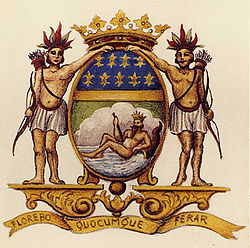| No. | Portrait | Incumbent | Tenure |
|---|
| Took office | Left office |
|---|
| Governors of the Compagnie des Indes |
| | Julien Duronguët le Toullec
Acting | 24 December 1721 | 7 April 1722 |
| 1 | | Denis, chevalier de Nyon | 7 April 1722 | 16 December 1725 |
| | Duval de Hauville
Acting for Nyon | 7 April 1722 | 16 December 1725 |
| | Jacques Gast d'Hauterive
Acting for Nyon | 13 July 1722 | 3 December 1722 |
| | Denis de Brousse
Acting | 16 December 1725 | 13 March 1729 |
| 2 | | Pierre Benoît Dumas | 13 March 1729 | 20 August 1729 |
| 3 | | Nicolas de Maupin | 20 August 1729 | 4 June 1735 |
| Governor-general of the Compagnie des Indes |
| 4 |  | Mahé de La Bourdonnais | 4 June 1735 | 23 March 1746 |
| | Didier de Saint-Martin
Acting for La Bourdonnais | 20 March 1740 | 14 August 1741 |
| | Didier de Saint-Martin
Acting for La Bourdonnais | 14 August 1741 | 18 December 1742 |
| | Didier de Saint-Martin
Acting | 23 March 1746 | 6 October 1746 |
| 5 | | Pierre Félix Barthélemy David | 6 October 1746 | 10 February 1753 |
| 6 |  | Jean-Baptiste Charles Bouvet de Lozier | 10 February 1753 | 3 December 1755 |
| 7 | | René Magon de la Villebague | 3 December 1755 | 4 November 1759 |
| 8 | | Antoine Marie Desforges-Boucher | 4 November 1759 | 14 July 1767 |
| Governor-general of the Mascarene Islands |
| 9 |  | Jean-Daniel Dumas | 14 July 1767 | 27 November 1768 |
| | Jean Guillaume Steinauer
Acting | 27 November 1768 | 6 June 1769 |
| 10 | | François Julien du Dresnay | 6 June 1769 | 23 August 1772 |
| 11 |  | Charles-Henri-Louis d'Arsac de Ternay | 23 August 1772 | 2 December 1776 |
| 12 | | Antoine de Guiran, chevalier de La Brillanne | 2 December 1776 | 28 April 1779 |
| | Joseph Murinais, comte de Saint-Maurice
Acting | 28 April 1779 | 30 April 1779 |
| | François, vicomte de Souillac
Acting | 1 May 1779 | 30 January 1780 |
| 13 | | François, vicomte de Souillac | 30 January 1780 | 3 November 1787 |
| | Camille Charles Leclerc, Chevalier de Fresne
Acting for Souillac | 5 April 1785 | 28 June 1785 |
| | François de Fleury
Acting for Souillac | 28 June 1785 | 7 November 1785 |
| 14 |  | Antoine Bruni d'Entrecasteaux | 5 November 1787 | 14 November 1789 |
| 15 |  | Thomas Conway | 14 November 1789 | 29 July 1790 |
| | Dominique Prosper de Chermont
Acting | 29 July 1790 | 19 August 1790 |
| | David Charpentier de Cossigny
Acting | 19 August 1790 | 18 June 1792 |
| 16 |  | Anne Joseph Hippolyte de Maurès, Comte de Malartic | 18 June 1792 | 28 July 1800 |
| 17 | | François Louis Magallon de la Morlière | 28 July 1800 | 3 February 1803 |
| 18 |  | Charles Mathieu Isidore Decaen | 26 September 1803 | 3 December 1810 |
| Prefect |
| 19 | | Louis Léger | 26 September 1803 | 3 December 1810 |








